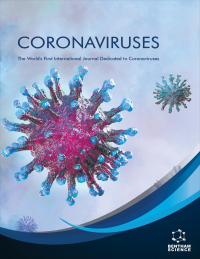-
s In-SilicoStructure-Based Drug Discovery of Candidate Drugs against Novel Protein Receptor Complex Nsp10-Nsp16 of SARS-CoV-2 using Drug Repurposing Approach
- Source: Coronaviruses, Volume 2, Issue 2, Feb 2021, p. 255 - 264
-
- 01 Feb 2021
Abstract
<P>Background: Several therapeutic possibilities have been explored against Severe Acute Respiratory Syndrome-2 (SARS-CoV-2), such as convalescent plasma (CP), intravenous immunoglobulin (IVIG) and monoclonal antibodies. Compounds such as hydroxychloroquine have also been found to have fatal drawbacks. Repurposing of existing antiviral drugs can be an effective strategy, which could fasten up the process of drug discovery. </P><P> Objective: The present study is designed to predict the computational efficacy of pre-existing antiviral drugs as inhibitors for the Nsp10-Nsp16 complex protein of SARS-CoV-2. </P><P> Methods: Twenty-six known antiviral drugs along with their similar structures based on Tanimoto similarity, were screened towards the Nsp10-Nsp16 complex’s active site. </P><P> Results: Our study reports competitive binding of 1-[3-[2-(2-Ethoxyphenoxy) ethylamino]-2- hydroxypropyl] -9H-carbazol-4-ol against AdoMet binding site in Nsp10-Nsp16 complex. Formation of the stable ligand-receptor complex with 1-[3-[2-(2-Ethoxyphenoxy) ethylamino]-2-hydroxypropyl] -9Hcarbazol- 4-ol could functionally inhibit the Nsp10-Nsp16 complex, thereby making the SARS-CoV-2 vulnerable to host immuno-surveillance mechanisms. </P><P> Conclusion: We conclude that these computational hits can display positive results in in-vitro trials against SARS-CoV-2.</P>


